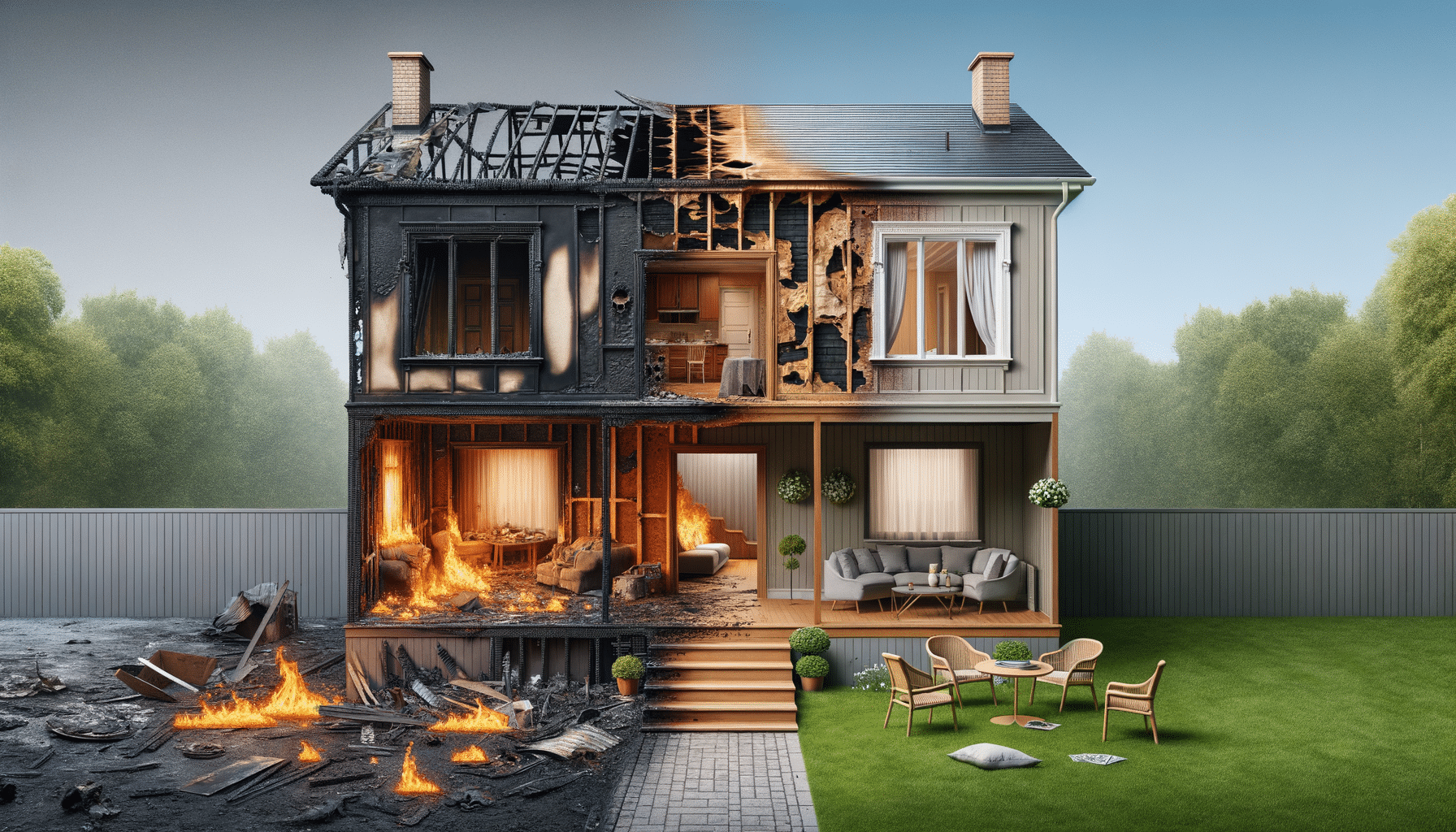
Understanding Fire Damage and Restoration Services
Introduction to Fire Damage
Fire damage is a devastating event that can affect both residential and commercial properties. The aftermath of a fire often leaves behind not only visible destruction but also hidden damages that can compromise the structural integrity and safety of a building. Understanding the full scope of fire damage is crucial for effective restoration and recovery. This article delves into the various aspects of fire damage, exploring its effects, the restoration process, and the importance of professional intervention.
Types of Fire Damage
Fire damage is not a singular event but a combination of several destructive elements. The primary types of fire damage include:
- Thermal Damage: The heat generated by a fire can cause structural elements to weaken or collapse, melting or warping materials.
- Smoke Damage: Smoke can permeate walls, furniture, and fabrics, leaving behind a lingering odor and potential health hazards.
- Soot Damage: Soot is a byproduct of incomplete combustion, leaving a greasy, black residue that can stain surfaces and pose respiratory risks.
- Water Damage: Often overlooked, water used to extinguish the fire can cause additional damage, leading to mold growth and further structural issues.
Each type of damage requires specific cleaning and restoration techniques, highlighting the complexity of fire restoration efforts.
Fire Damage Assessment and Cleanup
The first step in addressing fire damage is a thorough assessment by professionals. This involves evaluating the extent of the damage and identifying areas that require immediate attention. Professional cleanup services utilize specialized equipment and techniques to remove debris, clean soot and smoke residues, and mitigate water damage. The cleanup process is crucial in preventing further deterioration and preparing the site for restoration.
Professionals also conduct safety assessments to ensure the building is structurally sound before any restoration work begins. This includes checking the stability of walls, ceilings, and floors, as well as inspecting electrical systems for potential hazards.
Restoration and Repair Processes
Once the initial cleanup is completed, the restoration process can begin. Restoration involves repairing and replacing damaged structures, such as walls, roofs, and flooring. It also includes restoring electrical and plumbing systems to ensure the building is safe for occupancy.
Fire restoration professionals use a variety of techniques to restore a property to its pre-fire condition. This may involve:
- Repainting and refinishing surfaces to remove smoke stains and odors.
- Replacing damaged insulation and drywall.
- Repairing or replacing damaged roofing and structural components.
- Conducting mold remediation if water damage has led to mold growth.
The goal of restoration is not only to repair the physical damage but also to restore the property’s aesthetic and functional aspects.
The Importance of Professional Fire Restoration Services
Attempting to handle fire damage restoration independently can be overwhelming and potentially dangerous. Professional restoration services offer several advantages, including:
- Expertise and Experience: Professionals have the knowledge and experience to handle complex restoration tasks efficiently and safely.
- Specialized Equipment: Restoration companies use advanced equipment and techniques to ensure thorough cleaning and repair.
- Comprehensive Solutions: From assessment to final restoration, professionals provide a complete solution that addresses all aspects of fire damage.
- Insurance Liaison: Many restoration companies assist with insurance claims, helping property owners navigate the often-complicated process.
Engaging professional services ensures a more effective and timely recovery, minimizing the disruption caused by fire damage and helping property owners return to normalcy sooner.


